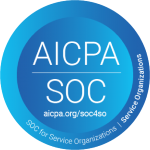Crafting a Resume That Stands Out

Your resume is often the first impression you make on potential employers, so it’s crucial that it stands out. Good resume allows you to present yourself and your skills in a way that aligns with what recruiters and hiring managers are looking for.
Studies show that recruiters spend an average of 6 to 7 seconds scanning a resume before deciding whether to keep reading or move on to the next one (The Ladders, 2018). In this short time, your resume needs to be both easy to read and compelling.
What Your Resume Really Needs
A resume should be clear, concise, and tailored to the job you’re applying for. The structure can vary slightly depending on your industry, but the following sections are commonly included:
- Contact Information: Make sure to include your full name, phone number, professional email address, LinkedIn profile (if relevant), and location (city and state). Keep it simple and professional.
- Professional Summary or Objective: A professional summary provides a snapshot of your skills and experience. It should be tailored to the specific job you’re applying for. Keep it to 2-3 sentences focusing on your most relevant experience and key achievements. For example: “Results-driven marketing professional with over 5 years of experience in digital strategy and brand management, increasing customer engagement by 20%.”
- Work Experience: List your work experience in reverse chronological order. Include job title, company name and dates of employment. For each role, describe your key responsibilities and achievements. Quantify your accomplishments wherever possible to show impact. Tip: Use action verbs such as led, managed, improved, or developed to make your experience stand out.
- Skills Section: Highlight a combination of hard and soft skills relevant to the position. Focus on the technical and interpersonal skills that are most valuable in your industry. Make sure these match keywords from the job description.
- Education: Include your degree(s), institution, and graduation date. If you’re a recent graduate, you may also want to list relevant coursework, academic achievements, and extracurricular activities.
- Certifications & Awards: If you hold any certifications that are relevant to the role, list them here, along with any professional awards you have received.

Lookin’ Sharp – How to Make Your Resume Shine
The look of your resume matters, especially when it comes to creating a professional and polished impression. Here are a few design and visual tips to ensure your resume is appealing:
- Consistent Formatting: Use a clear and consistent format throughout your resume. Stick to one or two fonts (preferably sans-serif fonts like Arial, Calibri, or Helvetica), and use a font size between 10-12 points for body text and slightly larger for headers.
- White Space: Resist the urge to fill every inch of space with text. Proper use of white space makes the document more readable and professional. Keep margins at least 0.75 inches on all sides and leave space between sections.
- Use of Bullets: Use bullet points to make your resume easier to scan quickly. Each bullet should focus on one accomplishment or responsibility. Start each bullet with an action verb.
- Avoid Images and Graphics: Unless you’re in a creative industry like design, avoid including photos, graphics, or overly decorative elements. Many Applicant Tracking Systems cannot process these formats.
- Length: For most professionals, a one-page resume is ideal. If you have extensive experience (10+ years), a two-page resume can be appropriate. Avoid including irrelevant details or outdated roles.

Everything You Wanted to Know About Resumes (But Were Afraid to Ask)
Does a robot review my resume?
Well, technically yes, many companies use Applicant Tracking Systems (ATS) to filter resumes based on keywords. However, at 4Cast, our hiring teams take pride in reviewing each resume (and, for the record, they get pretty offended when you call them robots!). While ATS helps streamline the process, don’t worry, your resume will reach human eyes.
Should I put my photo?
In most industries, a photo isn’t necessary (and in some regions, it’s even frowned upon for fairness reasons). As for graphics, unless you’re in a creative field like design, keep it clean and professional.
In what format should I send my resume?
Always follow the job posting instructions, but in general, .docx or PDF formats are the safest options.
What’s a cover letter, and how do I use it?
A cover letter is your chance to personalize your application. Think of it as the introduction to your resume. It’s your opportunity to explain why you’re interested in the role, how your skills align with the company, and why you’d be a great fit. Make it short, engaging, and tailored to the job you’re applying for.
Should I have different versions of my resume?
Absolutely! Tailoring your resume for different jobs can significantly improve your chances. Use a base resume and tweak it for each role to highlight the skills and experience that are most relevant. Remember, one-size-fits-all rarely works when it comes to resumes.
Do recruiters really check LinkedIn?
You bet they do! Your LinkedIn profile is essentially your digital resume. Make sure it’s up-to-date, professional, and matches your resume. Add relevant skills, certifications, and a good summary that captures your professional journey.
What if I have employment gaps?
Gaps happen, and recruiters understand that. The key is how you explain them. Use your cover letter to explain any gaps, focusing on what you learned or how you’ve grown during that time. Whether you were traveling, freelancing, or upskilling, it’s all part of your story.
How do I list my skills on my resume?
Create a separate “Skills” section where you list your most relevant skills. You can categorize them into “Technical Skills” and “Soft Skills” to make it easier for the reader to scan.
What if I’m changing careers?
If you’re making a career switch, highlight transferable skills that apply to the new role. For example, project management skills from an HR role might be just as relevant in a marketing role.

